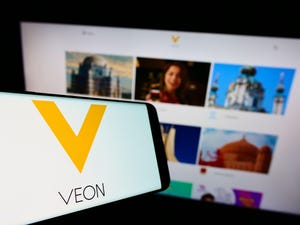Liberty Global connects with Broadcom, Sagemcom on DOCSIS 4.0 test
Liberty Global saw downstream speeds of 12.33 Gbit/s on DOCSIS 4.0 device prototypes from Sagemcom and Broadcom. Widespread D4.0 deployments are still a couple of years away for the operator.

Liberty Global's next-generation network will focus on fiber in several European markets, but the operator also plans to execute DOCSIS 4.0 upgrades on portions of its hybrid fiber/coax (HFC) networks.
Some evidence of Liberty Global's handiwork sprung up on LinkedIn, where an exec shared some details about a recent lab test centered on a handful of DOCSIS 4.0 reference designs and gateway prototypes from Sagemcom powered by Broadcom silicon.
Liberty Global's lab test achieved downstream speeds of 12.33 Gbit/s on a single gateway, "setting the path for 10G DOCSIS in Liberty Global," Mark Kinlen, VP of consumer and B2B services at Liberty Global, explained in the LinkedIn post.
Word of those specifics arrived a few weeks after VodafoneZiggo announced it had conducted a DOCSIS 4.0 test over a live network at its TEC Campus in Amsterdam.
That vendor pairing used in the trial also emerges as CableLabs prepares to accept D4.0 modems for certification testing starting June 26. As of this writing, no cable modem manufacturers that are known to be using Broadcom silicon have openly committed to submitting products for certification testing by that date. Hitron, a supplier that's working with MaxLinear, expects to be ready for certification testing sometime in the first half of 2024.
Light Reading has asked Liberty Global to provide some additional color, including what kind of upstream speeds were achieved in the test.
UPDATE: Liberty Global said the CPE test on the live plan fits in to a broader evolution to DOCSIS 4.0 and builds on the test outlined in the VodafoneZiggo announcement.
Meanwhile, Bill Warga, Liberty Global's VP of technology and strategy, touched on the company's DOCSIS 4.0 plans during this week's annual, Light Reading-hosted Cable Next-Gen Europe online event. He referenced the the DOCSIS 4.0 trial during a keynote interview.
"The technology works," Warga said of DOCSIS 4.0. "It's the time for the equipment vendors to get us the chips and CPE [customer premises equipment], and also the network capability for upgrading."
Warga said Liberty Global will push ahead with more tests and trials, adding that he expects deployments of DOCSIS 4.0 to occur in the 2024-2025 timeframe, "targeting the areas where it makes the most sense to get it deployed."
DOCSIS 4.0 just one tool in the toolchest
Liberty Global's next-gen access network plan varies by market and circumstance. The operator's emphasis is clearly on fiber-to-the-premises, with a focus on XGS-PON, but the company will also use DOCSIS 4.0 (and DOCSIS 3.1 network upgrades/enhancements) on a more targeted basis.
Areas where Liberty Global expects to deploy D4.0 include some areas in Switzerland and Belgium. Liberty Global plans to go almost exclusively with DOCSIS 4.0 upgrades in the Netherlands.
"It's nice to have both DOCSIS 4.0 and fiber in your toolbox, so you can target even within a country certain markets or certain demographics," Warga said.
But DOCSIS 4.0 "is nothing to sneeze at," he added, noting that it's a multi-gig service and a good way to extend the life of HFC plant. "It [DOCSIS 4.0] is going to be rolled out maybe quicker than people think," Warga said.
DOCSIS 4.0 modems might have a role to play even where Liberty Global doesn't upgrade the network to DOCSIS 4.0. Some operators are grappling with the idea of deploying DOCSIS 4.0 models on DOCSIS 3.1 networks built out to 1.2GHz to boost download speeds.
Fiber leads the way in Europe
But fiber-to-the-premises (FTTP) is clearly the priority in Europe. In 2022, fiber accounted for 42% of all broadband subscriptions, compared to 16% for cable, said Julia Schindler, senior analyst, European markets, at Omdia, in a keynote that sized up the outlook for the European broadband market. Light Reading and Omdia are both owned by Informa.
Fiber's share of broadband subscriptions is expected to reach 62% by 2027, Schindler said.

Click here for a larger version of this image.
(Source: Omdia)
"Fiber has become a priority for European governments, regulators and also operators, which has accelerated the rollout across those countries," she said.
Fixed wireless access (FWA) in Europe remains a niche technology, representing 4% of broadband subscriptions, according to Omdia. FWA's main use is in areas that are hard to reach and where DSL is being decommissioned, Schindler said.
Warga said Liberty Global has deployed FWA in parts of Switzerland and Belgium, viewing it as a way to target edges of the network, rural areas and as a weapon to wield against DSL.
Related posts:
— Jeff Baumgartner, Senior Editor, Light Reading
Read more about:
EuropeAbout the Author(s)
You May Also Like












